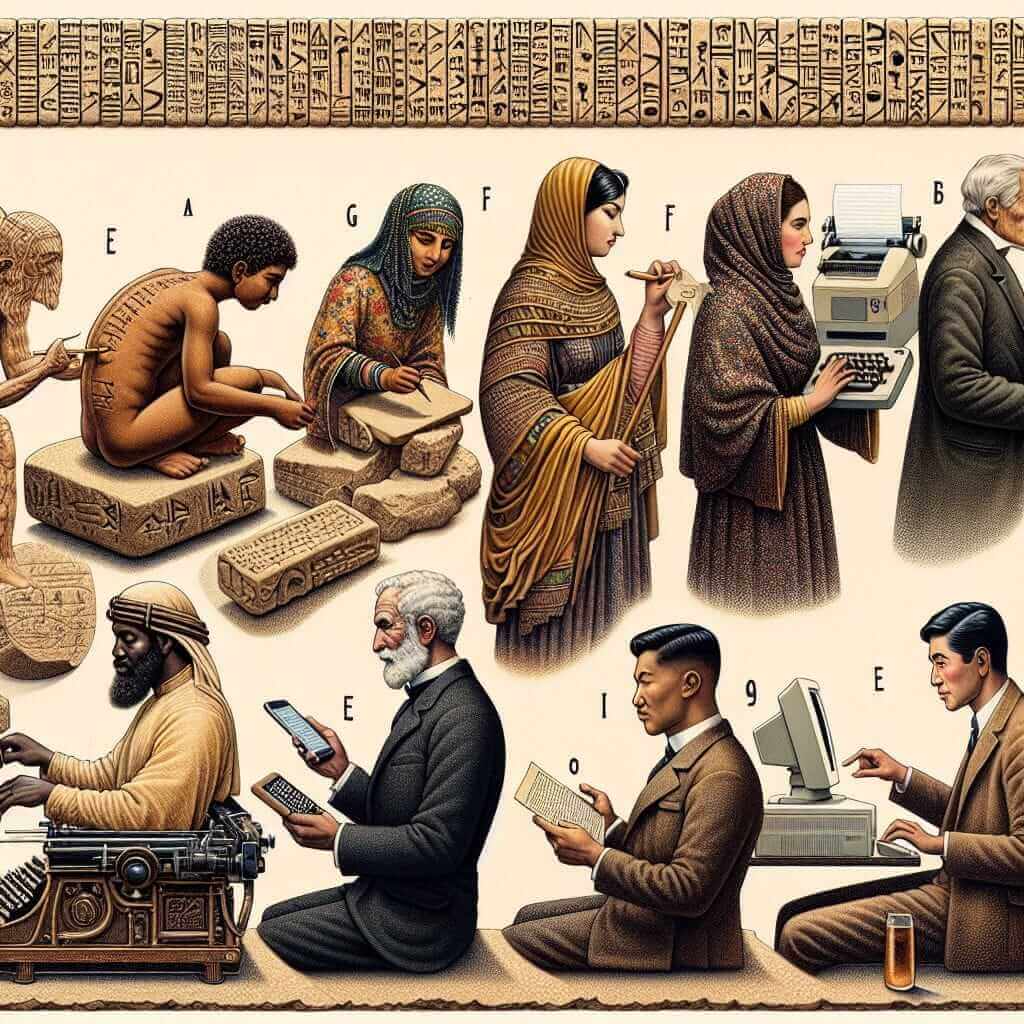The IELTS Reading test is a crucial part of the IELTS examination, evaluating a candidate’s ability to understand and interpret academic texts. Over the years, the integration of technology into everyday life has fascinated many researchers and test developers, making “How does technology influence the evolution of language?” a recurring and relevant topic. With technology’s rapid advancements, understanding its impact on language evolution can provide essential insights for the IELTS Reading test.
In recent years, various topics related to technology and language have appeared in IELTS Reading passages, indicating the growing importance and relevance of this subject. Given the interconnected nature of language and technology, there’s a considerable chance this topic might surface again in future tests. This guide provides an IELTS Reading practice test on this topic, along with questions, answers, and valuable insights to help you excel.
Practice Reading Test: How Does Technology Influence the Evolution of Language?
Passage (Medium Text)
In the age of digital communication, the evolution of language has accelerated, influenced heavily by technological advancements. From early writing systems etched in stone and ink to contemporary digital scripts, technology has played a pivotal role in shaping how we convey ideas, emotions, and information.
Firstly, the invention of the printing press in the 15th century revolutionized access to written material, making books and newspapers more widely available. This democratization of knowledge facilitated the standardization of languages, diminishing dialectical differences and enabling more cohesive communication.
Entering the 20th and 21st centuries, the internet and mobile technology have introduced new dynamics to language evolution. Email, instant messaging, and social media platforms have spawned abbreviations, acronyms, and emoticons, revolutionizing how we write and converse. For instance, initialisms like “LOL” (Laugh Out Loud) and “BRB” (Be Right Back) have emerged, symbolizing the nexus between technology and linguistic economy.

Additionally, technology mediates the cross-pollination of languages through digital globalization. Tools like online translators and language learning apps have made it easier for individuals to acquire foreign languages, leading to the creation of hybrid languages and dialects. Spanglish (a blend of Spanish and English) and Hinglish (a combination of Hindi and English) exemplify this phenomenon.
Despite the benefits, there are contentious debates about technology’s influence on language purity and grammar. Critics argue that the informal nature of digital communication erodes linguistic standards, particularly among younger generations. However, proponents suggest that these changes signify language adaptability and resilience, reflecting social and technological contexts.
In conclusion, technology’s influence on language evolution is multifaceted, encompassing both the creation of new linguistic forms and the transformation of existing ones. As technology continues to advance, the linguistic landscape will invariably evolve, mirroring the complexities and diversities of human communication.
Questions
Multiple Choice:
- What does the passage mainly discuss?
a) The history of the printing press.
b) The influence of technology on the standardization of languages.
c) How technology has impacted the evolution of language.
d) The debates surrounding technology and language purity.
True/False/Not Given:
2. The printing press helped diminish dialectical differences.
3. “Spanglish” is an example of a hybrid language influenced by digital globalization.
Matching Information:
4. Match the following statements with the correct portion of the text:
- The creation of new linguistic forms due to technology.
- The emergence of initialisms and acronyms.
Summary Completion:
5. Complete the summary with words from the passage:
Email, instant messaging, and social media have created new forms of communication such as ____ and ____.
Answers and Explanations
-
(c) How technology has impacted the evolution of language.
- The passage is centered on discussing the various ways technology has influenced language evolution over time.
-
(True)
- The passage states that the printing press facilitated the standardization of languages, which diminished dialectical differences.
-
(True)
- The passage states that Spanglish is an example of hybrid languages created due to digital globalization.
-
a) The creation of new linguistic forms due to technology. – Paragraph 4.
b) The emergence of initialisms and acronyms. – Paragraph 3. -
Email, instant messaging, and social media have created new forms of communication such as abbreviations and acronyms.
Common Mistakes
When faced with reading comprehension questions, students often:
- Misinterpret or overlook key information in the text.
- Struggle with vocabulary and complex sentence structures.
- Rush through passages without thorough comprehension.
Vocabulary List
- Facilitate (verb) /fəˈsɪlɪˌteɪt/: To make an action or process easier.
- Democratization (noun) /dɪˌmɒkrətɪˈzeɪʃən/: The action of making something accessible to everyone.
- Standardization (noun) /ˌstændədaɪˈzeɪʃən/: The process of making something conform to a standard.
- Initialism (noun) /ɪˈnɪʃəlɪzəm/: An abbreviation consisting of the first letters of each word in the name of something, pronounced separately.
- Resilience (noun) /rɪˈzɪliəns/: The ability to adapt to different conditions.
Grammar Focus
- Relative Clauses: Provides additional information about a noun without starting a new sentence. Example: “The internet and mobile technology, which have introduced new dynamics, have influenced language evolution.”
- Present Perfect Tense: Indicates an action or situation that started in the past and continues in the present. Example: “Technology has played a pivotal role in shaping how we convey ideas.”
Advice for High Reading Scores
- Practice Regularly: Consistent practice helps you familiarize yourself with different types of passages and questions.
- Expand Your Vocabulary: A broader vocabulary allows better comprehension and quicker interpretation of texts.
- Develop Skimming and Scanning Skills: These skills help locate important information quickly.
- Focus on Time Management: Being able to manage your time effectively ensures you can answer all questions within the given period.
By following these guidelines, you can improve your reading comprehension skills and achieve a higher score in the IELTS Reading test. Good luck with your preparation!